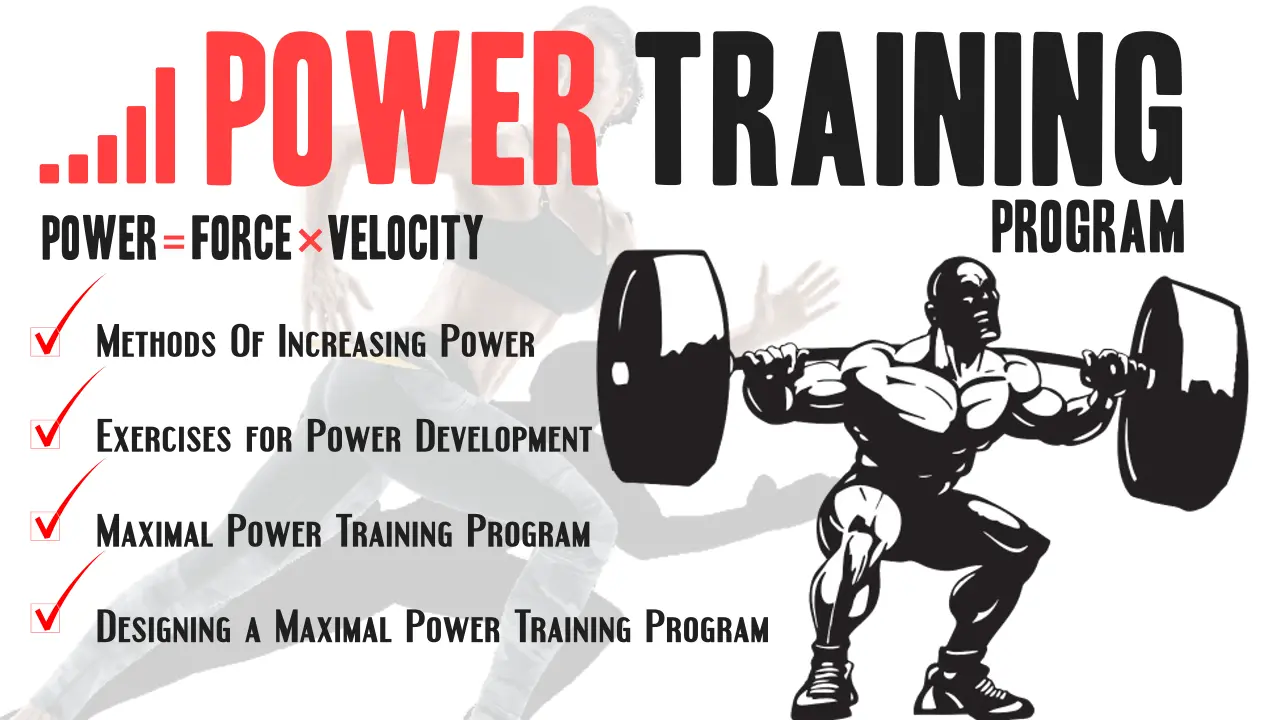Contents
- Power Formula: Force x Velocity
- Primary Focus: Explosive Strength and Speed
- Benefits of Power Training
- How Power Training Differs from Other Workouts
- The Science Behind Power Training
- Training Methods to Increase Power
- Designing a Maximal Power Training Program
- Example Power Training Program
- Nutrition for Power Training
Maximal power training is a critical component of athletic performance, especially in sports that demand quick and forceful movements. It’s the ability to convert strength into explosive force. By understanding the science of power, optimizing your strength, and tailoring your training program to incorporate explosive movements, you can unlock your full athletic potential. It’s not just about how much weight you can lift; it’s about how fast you can move it.
Power Formula: Force x Velocity
The concept of power can be distilled into a simple equation: Power = Force x Velocity. In essence, your power output is the result of how much force you can generate and how quickly you can apply it. It means that to maximize your power, you need to increase both the force you can generate and the speed at which you can do it. This equation forms the foundation of maximal power training.
Primary Focus: Explosive Strength and Speed
Explosive Strength:
Power training prioritizes the development of explosive strength, which is the ability to generate maximal force in minimal time. This form of strength is critical in sports and activities that require sudden bursts of power, such as sprinting, jumping, and weightlifting.
Speed:
Speed is another essential component of power training. It’s not just about being strong; it’s about being able to apply that strength quickly.
In the world of athletics, speed isn’t just about how fast you can run; it’s about how quickly you can exert force. Many sports movements require athletes to make rapid and forceful muscular contractions within a fraction of a second – as little as 250 milliseconds.
Take weightlifting, for instance. It’s not just about lifting a heavy barbell; it’s about accelerating it forcefully in a short amount of time. It’s a combination of strength and speed, and this blend of factors is what makes an athlete truly powerful. Power training improves an individual’s ability to move swiftly and efficiently, which can be a game-changer in various sports and daily tasks.
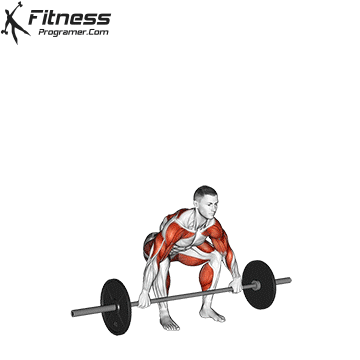
Benefits of Power Training
- Explosive Strength: Power training develops explosive strength, enabling athletes to generate quick and forceful movements, such as sprinting, jumping, and changing direction rapidly.
- Speed and Agility: Improved muscle coordination and neuromuscular efficiency contribute to greater speed and agility, essential in sports like soccer, basketball, and tennis.
- Vertical Jump: Power training can significantly increase an athlete’s vertical jump, enhancing performance in basketball, volleyball, and other sports requiring jumping ability.
- Improved Neuromuscular Coordination: Power training requires precise timing and coordination of muscle contractions. Over time, this leads to better neuromuscular coordination, allowing individuals to execute complex movements with greater precision.
- Enhanced Balance: Many power exercises, such as plyometrics, challenge balance and stability, leading to improved proprioception and reduced risk of falls and injuries.
- Functional Fitness: Power training improves the ability to perform everyday tasks that require strength and speed, such as lifting heavy objects, climbing stairs, or reacting quickly in emergency situations.
- Mental Toughness: The mental challenge of pushing one’s limits in power training fosters discipline and mental toughness.
How Power Training Differs from Other Workouts
Comparison to Strength Training:
- Power Training: The primary goal of power training is to enhance explosive strength and speed. It emphasizes the ability to generate maximal force in minimal time, making it ideal for activities requiring quick, powerful movements.
- Strength Training: Strength training, on the other hand, focuses on building maximal strength. While it may involve lifting heavy weights, it doesn’t prioritize speed or explosiveness in the same way power training does.
”Maximal strength training plays a fundamental role in enhancing explosive power.”
According to the National Strength and Conditioning Association (NSCA); The suggested sequencing examples for muscular power training goals, based on an athlete’s fitness level, are as follows:
Intermediate: Hypertrophy (negatives) → Muscular strength → Muscular power → Muscular strength (accommodating resistance)
Advanced: Hypertrophy (drop sets) → Muscular strength (cluster sets) → Muscular strength + Muscular power (complex sets) → Muscular power
These sequencing examples provide a structured progression from hypertrophy to strength to power training, with advanced athletes incorporating more complex and advanced training techniques like drop sets, cluster sets, and complex sets.
The Role of Maximal Strength Training
To achieve optimal results in maximal power training, it’s essential to have a solid foundation of maximal strength. When an athlete has a solid foundation of maximal strength, they can optimize peak force production. This strength forms the basis for generating force during the initial stages of a movement. However, to harness the full potential of power, a distinct focus on maximal power training is necessary.
Maximal power training involves specific exercises and protocols designed to maximize the rate of force production and velocity. This specialized training aims to bridge the gap between pure strength and explosive power, ensuring athletes can excel in sports that demand both.
Maximal Strength Training: Start with a foundation of maximal strength. This involves lifting heavy weights to improve your force-producing capacity.
3×5 Full Body Strength Training Program for Beginners (Training overview)
Maximal Power Training: Once a solid base of strength is established, shift your focus to maximal power training. This phase should involve exercises and techniques aimed at improving your ability to generate force quickly and explosively.
Comparison to Endurance Training:
- Power Training: Power training involves short bursts of high-intensity exercise, often lasting only a few seconds to a minute. Activities like sprinting or jumping are typical examples.
- Endurance Training: Endurance training, in contrast, focuses on sustaining lower to moderate intensity efforts over extended periods, often involving activities like running, cycling, or swimming for minutes to hours.
Energy Systems:
- Power Training: The primary energy system engaged in power training is the ATP-PCr (phosphagen) system, which provides immediate energy for short bursts of high-intensity effort. This system relies on rapid ATP regeneration from phosphocreatine.
- Endurance Training: Endurance training predominantly relies on the aerobic energy system, which utilizes oxygen to produce energy for sustained, lower-intensity activities. Glycolysis (anaerobic metabolism) also plays a role during moderate to high-intensity endurance efforts.
Muscle Fiber Types:
- Power Training: Power training primarily targets fast-twitch muscle fibers, which are responsible for rapid and forceful contractions. These fibers are well-suited for explosive efforts.
- Endurance Training: Endurance training emphasizes slow-twitch muscle fibers, which are designed for sustained contractions and resistance to fatigue.
Comparison to Hypertrophy Training
Hypertrophy training leads to muscle growth by increasing the size of individual muscle fibers. It is associated with a more aesthetic, “bulked” appearance and greater muscle endurance compared to power training.
Intensity and Volume
Hypertrophy training typically involves moderate to high-intensity exercises, with loads ranging from 60-85% of one’s one-repetition maximum (1RM). Typically in the range of 8-12 repetitions per set. The volume (sets and reps) in power training is typically lower compared to hypertrophy training. It prioritizes quality over quantity.
Energy Systems:
- Power Training: Power training relies predominantly on the ATP-PCr (adenosine triphosphate-phosphocreatine) system, providing immediate energy for short bursts of high-intensity effort.
- Hypertrophy Training: Hypertrophy training utilizes the glycolytic system and to some extent the ATP-PCr system. It can sustain high-intensity effort for longer durations compared to power training.
Rest Intervals:
Shorter rest intervals (30-90 seconds) are often used in hypertrophy training to create metabolic stress and increase time under tension. Shorter rests contribute to muscle fatigue and metabolic stress, factors that are believed to promote muscle growth. Rest periods of 3-5 minutes between sets are common in power training.
Muscle Fiber Recruitment:
- Power Training: Power training heavily recruits fast-twitch muscle fibers. These fibers are responsible for generating explosive force but fatigue quickly.
- Hypertrophy Training: Hypertrophy training recruits both fast-twitch and slow-twitch muscle fibers, with an emphasis on fast-twitch fibers, which have greater growth potential.
Exercise Selection:
- Power Training: Power training exercises often include explosive movements like sprinting, jumping, Olympic lifts, and plyometrics.
- Hypertrophy Training: Hypertrophy training typically involves a wide range of resistance exercises targeting specific muscle groups. These exercises focus on isolating and targeting muscle groups for growth.
It’s important to note that these training approaches can complement each other. Some athletes and fitness enthusiasts incorporate elements of both power training and hypertrophy training into their routines based on their specific goals and needs. The choice between these two training methods should align with individual objectives and preferences.
The Science Behind Power Training
Power training is not just about lifting weights or performing explosive movements; it’s deeply rooted in physiological principles that govern muscle function, energy systems, and the relationship between force and velocity. In this chapter, we will delve into the science behind power training to understand how it works.
1. Muscle Fiber Types:
Fast-Twitch vs. Slow-Twitch Muscle Fibers:
- Muscles in the human body consist of different types of muscle fibers, primarily categorized as fast-twitch and slow-twitch fibers.
- Fast-twitch fibers contract rapidly and generate significant force, making them essential for explosive movements characteristic of power training.
- Slow-twitch fibers, on the other hand, are designed for endurance and can sustain contractions for longer periods.

Recruitment of Muscle Fibers:
- Power training aims to recruit and develop fast-twitch muscle fibers.
- During high-intensity, explosive movements, the nervous system signals the recruitment of fast-twitch fibers to generate maximal force quickly.
2. Energy Systems in Power Training
A crucial aspect of understanding power training lies in comprehending the energy systems that power it. Among these systems, the ATP-PCr (adenosine triphosphate-phosphocreatine) system plays a pivotal role in fueling short bursts of high-intensity effort, making it the primary energy source for power training.
ATP-PCr (phosphagen system):
- Adenosine Triphosphate (ATP): ATP is often referred to as the “energy currency” of cells. It is a molecule that stores and transfers energy within cells, allowing them to perform various functions. During exercise, the muscles require ATP to contract and generate force.
- Phosphocreatine (PCr): PCr is a high-energy molecule found within muscle cells. It plays a critical role in the rapid regeneration of ATP. When your muscles contract forcefully, ATP gets broken down into adenosine diphosphate (ADP) and inorganic phosphate (Pi). The energy released during this process is used to power the muscle contraction. However, ATP levels can deplete rapidly during high-intensity efforts.
The ATP-PCr Energy System:
- Immediate Energy Source: The ATP-PCr system provides immediate energy for activities that require short bursts of high intensity, such as sprinting, jumping, and lifting heavy weights. It is the dominant energy system during the initial seconds of such activities.
- Rapid Regeneration: When ATP levels drop due to intense muscle contractions, PCr steps in to replenish ATP. This process occurs very quickly and efficiently, allowing for rapid energy regeneration.
- Limited Duration: While the ATP-PCr system is incredibly effective at providing energy for brief, intense efforts, it has a limited capacity. Typically, it can sustain maximum effort for approximately 5 to 15 seconds, after which other energy systems (such as glycolysis and the aerobic system) become more prominent.
ATP Regeneration in the Phosphagen System:
- Power training exercises, such as sprinting, jumping, and Olympic weightlifting, heavily rely on the ATP-PCr system due to their explosive and high-intensity nature. Adequate rest intervals are essential for the regeneration of ATP, which ensures you have the necessary energy to maintain peak performance during subsequent sets.
- For activities that heavily tax the phosphagen system, like power training, a rest period of 3-5 minutes between sets is generally recommended. For plyometric Exercises; While 2-3 minutes of rest is generally recommended, it’s essential to find the balance that works best for your specific needs, ensuring you maintain peak performance while avoiding excessive cooling off during your workouts.
Here’s why rest intervals matter and how to optimize them for your power training sessions.
3. The Force-Velocity Relationship:
Force-Velocity Curve:
- The force-velocity relationship in muscle physiology illustrates the inverse relationship between force (strength) and velocity (speed) during muscle contractions.
- At one end of the curve, when muscles generate maximal force (lifting heavy weights), the velocity is low.
- Conversely, at the other end, when muscles contract rapidly (high velocity), the force they generate is lower.
Implications for Power Training:
- Power training operates on the principle of maximizing the power output, which occurs at an intermediate point on the force-velocity curve.
- Exercises and movements that fall within this range—neither too slow nor too fast—allow individuals to generate the most power.
- Common power training exercises, such as squat jumps, Olympic lifts, and medicine ball throws, optimize this force-velocity relationship.
4. Training Adaptations:
Neuromuscular Adaptations:
- Power training induces neuromuscular adaptations, enhancing the efficiency of muscle contractions and neural pathways.
- These adaptations lead to improved force production and coordination during explosive movements.
In conclusion, power training operates on a foundation of muscle physiology and the force-velocity relationship. It targets fast-twitch muscle fibers, relies on the ATP-PCr energy system for immediate power generation, and optimizes the balance between force and velocity to enhance explosive strength and speed. Understanding these underlying principles is essential for designing effective power training programs and achieving optimal results in various sports and fitness endeavors.
Training Methods to Increase Power
Training methods to increase power focus on enhancing an individual’s ability to generate force quickly. These methods can significantly impact an athlete’s power output when applied correctly. Here are some common training methods and their effects on power:
1. Plyometric Training:
- Method: Plyometrics involve quick, explosive movements that utilize the stretch-shortening cycle of muscles. Exercises include box jumps, depth jumps, and squat jumps.
- Effect: Plyometric training enhances the neuromuscular system’s ability to rapidly switch from an eccentric (lengthening) to a concentric (shortening) muscle contraction, resulting in improved explosive power. It also increases the rate of force development, aiding in quick movements and jumps.
10 Plyometric Exercises:
- Long Jump
- Lateral Bounds
- Chest Tap Push-ups
- Bulgarian Split Jump Squats
- Clap Push-up
- Plyo Jack
- Jumping pull-ups
- Tuck Jump
- Single Leg Hip Thrust Jump
- Box Jump
2. Ballistic Training:
- Method: Ballistic training involves exercises in which resistance is accelerated explosively; The goal is to generate as much force and speed as possible during the concentric (muscle shortening) phase of the movement.
- Effect: Ballistic training improves power by training the body to generate force quickly against external resistance. It enhances motor unit recruitment, muscle fiber synchronization, and rate-coding, all of which contribute to greater power output.
10 Ballistic Exercises:
- Power Snatch
- Kettlebell Swings
- Push Press
- Jump Squats
- Barbell Snatch
- Clean And Press
- Barbell Jump Squat
- Med-Ball Chest Throw
- Wall Ball
- Kettlebell Thruster
3. Complex Training:
- Method: Complex training pairs a strength exercise, typically resistance-based and performed at a high intensity (about 75-90% of an athlete’s maximal lift), with a plyometric exercise. These exercises are chosen to be biomechanically similar, meaning they involve similar ranges of movement.
- Effect: This method capitalizes on post-activation potentiation (PAP), where the heavy lift primes the nervous system, leading to increased power in subsequent explosive movements. It improves the rate of force development and overall power. This method is highly effective in increasing the rate of strength development and overall power, and studies confirm that combining weightlifting exercises with plyometric exercises improves explosive performance (1).
Example Complex:
- Barbell Squat → Squat Jump
- Barbell Lunge → Split Squat Jump
- Overhead Squat → Wall Ball
- Bench Press → Ball Chest Throw
Designing a Maximal Power Training Program
To develop maximal power effectively, a well-designed training program is essential. It should consider factors like exercise selection, intensity, volume, rest intervals, and frequency. Additionally, athletes should incorporate ballistic exercises that promote the rapid projection of resistance.
1. Goal Setting:
Determine specific goals for your power training program. Are you looking to improve sprinting speed, vertical jump height, or overall athletic performance? Establish clear, measurable goals to track progress effectively.
2. Evaluate Your Current Abilities:
Conduct a fitness assessment to identify your strengths and weaknesses in terms of power, speed, and agility. Assess your baseline power capabilities, such as your vertical jump height or sprint times.
3. Exercise Selection
Select power training exercises that align with your goals and fitness level. Beginners may start with basic plyometric exercises, while more advanced individuals can incorporate Olympic lifts. Ensure exercises are safe and can be performed with proper form.
4. Frequency:
Determine how many days per week you can dedicate to power training. Not all muscle groups are trained in every session with high frequency. Major muscle groups may be trained 2-3 times per week, despite the large number of workouts.
5. Intensity Matters:
According to NSCA and ACSM; Recommended intensity ranges from 30% to 60% of 1RM for upper-body exercises and 0% to 60% of 1RM for lower-body exercises (30% to 70% for advanced).
In summary, the optimal loading range for power training varies depending on the exercise, with some exercises benefiting from lower loads (e.g., jump squats) and others requiring slightly higher loads (e.g., bench press and squat). Training for maximal power involves a combination of loading strategies tailored to specific exercises, all performed at high velocity to maximize power development.
6. Volume:
Power training isn’t about doing as many repetitions as possible. It’s about executing each repetition with maximal power and velocity. To achieve this, stick to 1-6 repetitions per set, ensuring the quality of each movement. Aim for 3 to 6 sets for each exercise.
7. Rest and Recovery:
Allow 2 to 5 minutes of rest between sets to ensure you’re fully recovered. Quality repetitions are key, and fatigue can lead to poor technique execution and increased injury risk.
8. Need for Speed:
Power is closely tied to velocity. Focus on moving as fast as possible during exercise execution. This will help you contract your muscles more forcefully and produce greater power.
Example Power Training Program
This program includes a mix of plyometric, ballistic, and non-ballistic exercises, along with considerations of appropriate intensity, recovery, and tempo to promote maximum power development.
Warm-Up:
- 5-10 minutes of light cardio (e.g., brisk walking or jumping jacks).
- Dynamic stretches for major muscle groups.
Cool-down after training:
- Static stretches for major muscle groups, holding each stretch for 15-30 seconds.
Tempo / Speed
- The tempo is specified as seconds taken to complete each lifting movement (Eccentric : Pause : Concentric). For example, a 2:1:1 tempo for Barbell Squat Jump means 2 seconds to descend into the squat position, 1-second pause at the bottom, and 1 second to perform the full triple extension squat jump.
- The explosive tempo requires the lifter to generate a high level of force in a short amount of time. The goal is to maximize the speed of contraction.
| Exercise | Sets-Reps/Rest | Intensity/Tempo |
|---|---|---|
 Power Clean | 3 x 5 2-5 min | 30 – 60 % Explosive |
 Long Jumps | 3 x 6 2-3 min | Bodyweight Explosive |
 Barbell Squat Jump | 3 x 5 2-5 min | 20 – 40 % 2:1:1 |
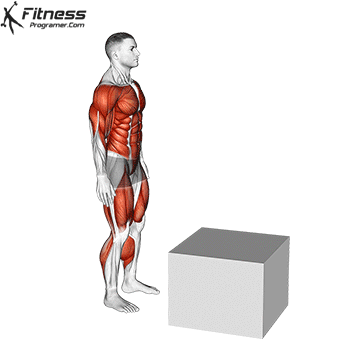 Box jump | 3 x 6 2-3 min | 40 cm box Explosive |
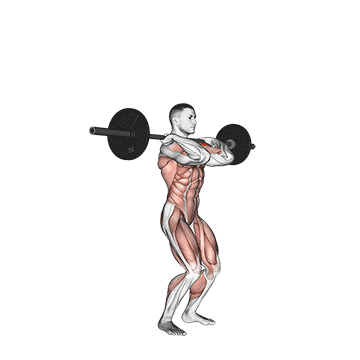 Barbell Push-Press | 3 x 5 2-5 min | 30 – 60 % 2:1:1 |
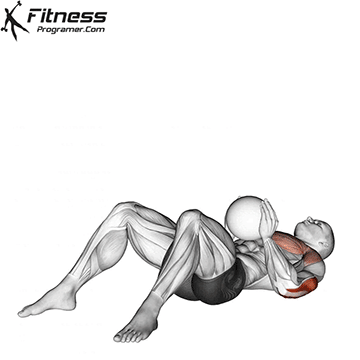 Medicine Ball Throw | 3 x 6 2-3 min | 3-8 kg Explosive |
 Bent Over Row | 3 x 5 2-5 min | 40 – 60 % 2:1:1 |
 Overhead Slam | 3 x 6 2-3 min | 3-8 kg Explosive |
Nutrition for Power Training
Proper nutrition is a critical component of a successful power training program. In this chapter, we will explore the nutritional requirements for effective power training, emphasizing the role of macronutrients, hydration, and dietary strategies to support muscle recovery and growth.
1. Macronutrient Balance:
Protein:
- Protein is essential for muscle repair and growth, making it a key macronutrient for power training.
- Aim for a protein intake of about 1.2 to 2.2 grams of protein per kilogram of body weight per day, depending on your training intensity and goals.
- Good sources of protein include lean meats, poultry, fish, eggs, dairy products, legumes, and plant-based sources like tofu and tempeh.
Carbohydrates:
- Carbohydrates provide the primary energy source for power training sessions, especially high-intensity exercises.
- Ensure that carbohydrates make up a significant portion of your daily calorie intake.
- Opt for complex carbohydrates like whole grains, fruits, vegetables, and legumes to provide sustained energy.
Fats:
- Healthy fats play a role in overall health and can contribute to sustained energy.
- Include sources of unsaturated fats, such as avocados, nuts, seeds, and olive oil, in your diet.
2. Hydration:
Stay Well-Hydrated:
- Dehydration can impair performance and recovery. Drink plenty of water throughout the day, especially before, during, and after workouts.
- Consider sports drinks with electrolytes for particularly intense or prolonged training sessions.
3. Timing:
Pre-Workout Nutrition:
- Consume a balanced meal 2-3 hours before your power training session to ensure you have sufficient energy.
- Include carbohydrates for energy, protein for muscle support, and a small amount of healthy fats.
- If your workout is closer to a mealtime, have a small, easily digestible snack like a banana or yogurt 30-60 minutes before training.
Post-Workout Nutrition:
- The post-workout window is crucial for muscle recovery and growth. Consume a meal or snack rich in protein and carbohydrates within 2 hours after your workout.
- A protein shake or smoothie with whey or plant-based protein, along with carbohydrates from fruit or oats, is an excellent post-workout option.
4. Supplements:
Creatine: Creatine supplements can help enhance power and strength, especially during high-intensity, short-duration exercises. Consult with a healthcare professional before starting any supplement regimen.
5. Recovery Strategies:
Sleep: Prioritize getting 7-9 hours of quality sleep each night to support muscle recovery and overall well-being.
Anti-Inflammatory Foods: Incorporate foods rich in antioxidants and anti-inflammatory properties, such as berries, leafy greens, and turmeric, to help reduce muscle soreness and inflammation.
6. Meal Timing:
Frequent Meals: Consider eating smaller, balanced meals and snacks throughout the day to provide a steady supply of nutrients and energy.
In summary, nutrition plays a vital role in the success of your power training program. Prioritize a balanced intake of macronutrients, stay well-hydrated, and pay attention to meal timing, especially around your workouts. By fueling your body with the right nutrients, you can optimize your power training results, promote muscle recovery and growth, and enhance overall athletic performance.
In conclusion, maximal power training is a cornerstone of athletic performance. By recognizing the significance of both force and velocity in the power equation, and by crafting a well-balanced training program that encompasses both maximal strength and power training, athletes can optimize their power production capabilities.
References:
- Physical Medicine and Rehabilitation Clinics of North America: Training for Muscular Power
- WILLIAM J. KRAEMER and NICHOLAS A. RATAMESS Fundamentals of Resistance Training: Progression and Exercise Prescription
- American College of Sports Medicine position stand. Progression models in resistance training for healthy adults PMID: 11828249
- Eight weeks of ballistic exercise improves power independently of changes in strength and muscle fiber type expression PMID: 18815571
- Comparing short-term complex and compound training programs on vertical jump height and power output PMID: 18296955
- National Strength and Conditioning Association (NSCA) foundations of fitness programming

